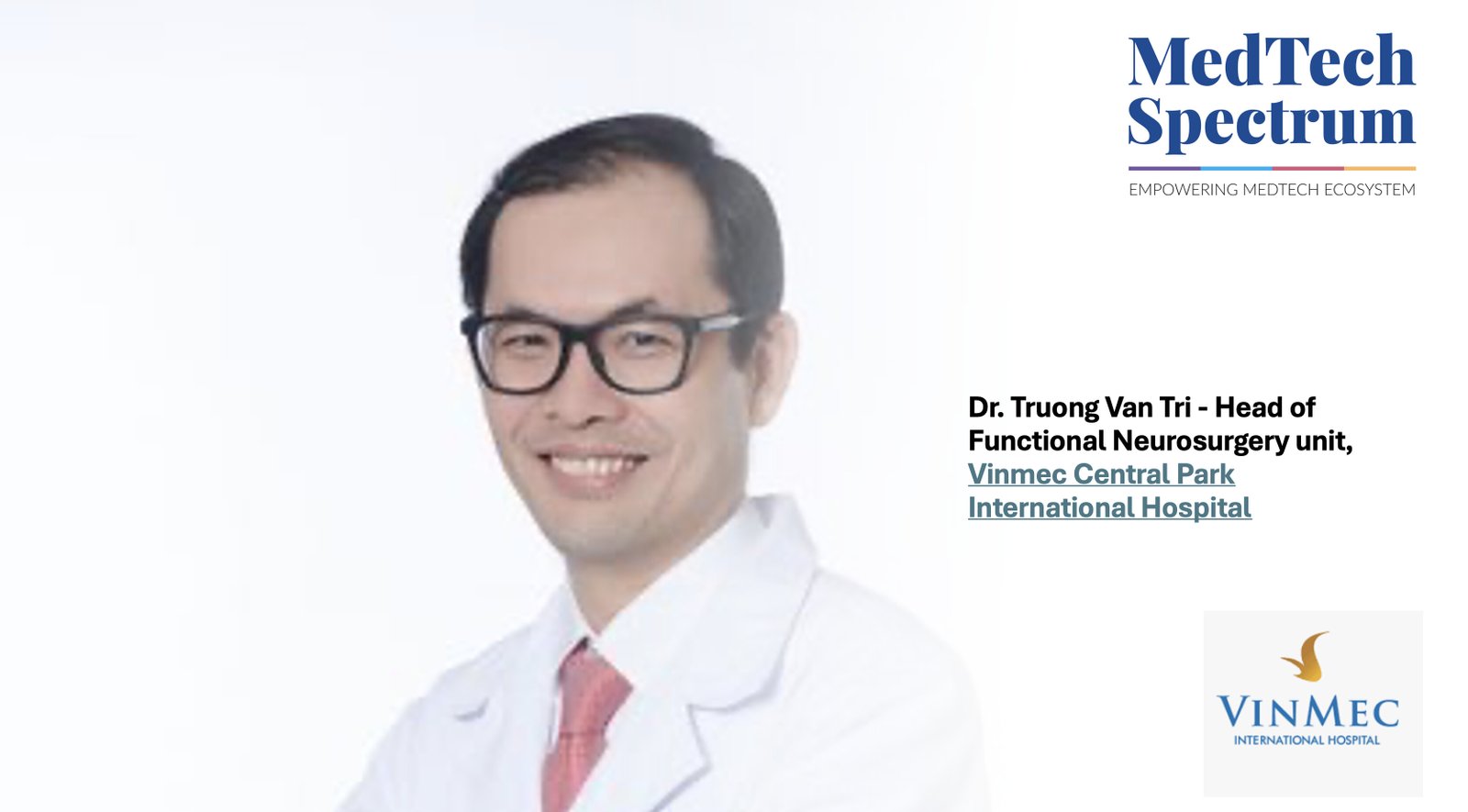
In a compelling stride forward for paediatric neurosurgery in Vietnam, MedTech Spectrum speaks with Dr. Truong Van Tri, Head of the Functional Neurosurgery Unit at Vinmec Central Park International Hospital. Dr. Tri and his team recently performed a landmark robotic SEEG procedure on a 9-year-old boy with drug-resistant epilepsy—a case where traditional imaging methods failed to pinpoint the epileptic focus. In this exclusive interview, Dr. Tri shares insights into the clinical decision-making, the role of AutoGuide™ robotic assistance, and Vietnam’s ambitions to scale this innovation across its healthcare system.
What made this case suitable for robotic SEEG intervention?
Dr. Truong Van Tri: “This case involved a 9-year-old boy with drug-resistant epilepsy, where the epileptic onset zone could not be localized through non-invasive methods like MRI, PET scan, and scal video EEG. The complexity and depth of the suspected epileptogenic zones made SEEG essential. Robotic guidance was ideal due to the need for high-precision electrode placement in deep or hard-to-access brain regions.”
How did the AutoGuide™ system improve surgical precision?
Dr. Truong Van Tri: “The AutoGuide™ robotic system enhanced accuracy in placing depth electrodes by allowing pre-operative planning with 3D imaging and real-time navigation. It reduced human error, minimized surgical time, and improved safety by avoiding critical brain structures, especially in multi-electrode trajectories.”
Was this surgery fully led by Vietnamese doctors?
Dr. Truong Van Tri: “Yes, the surgery was primarily led by Vietnamese neurosurgeons and epileptologists. They were trained in Montreal, Canada. In this case, there was mentorship from Prof. Shunsuke Nakae (Japan), but the operation itself was performed by Vietnamese team (VMCP team).”
What are the next steps to expand this technique nationally?
Dr. Truong Van Tri: “Plans include training more neurosurgeons in robotic SEEG techniques, investing in robotic systems for major hospitals, integrating epilepsy surgery into national health strategies, and forming interdisciplinary epilepsy centers across regions for standardized care.”
How has the patient’s recovery progressed since the operation?
Dr. Truong Van Tri: “The patient recovered well post-surgery, with no neurological deficits and rapid discharge. Initial electrode recordings successfully identified seizure onset zones, paving the way for definitive treatment (e.g., resective surgery or ablation). Follow-up showed a reduction or cessation of seizures, with significant improvement in quality of life.”